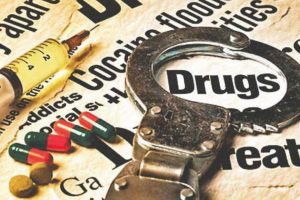 From the Golden Crescent nexus spread over South and Southwest Asia, the pursuit of narco-terrorism turns east, into the heart of the Golden Triangle, the borderline between Thailand, Myanmar and Laos. The first destination in this infamous narco-triangle built by hardcore drug cartels and unruly insurgencies is modern day Myanmar (Burma).
From the Golden Crescent nexus spread over South and Southwest Asia, the pursuit of narco-terrorism turns east, into the heart of the Golden Triangle, the borderline between Thailand, Myanmar and Laos. The first destination in this infamous narco-triangle built by hardcore drug cartels and unruly insurgencies is modern day Myanmar (Burma).
After Afghanistan, Myanmar is the second-largest producer of illicit opium in the world. Statistics say that in 1999, the Myanmarese country-side had an estimated 89,500 hectares under illicit opium poppy cultivation. Myanmar produces at least 80 per cent of the total produce of opium in south-east Asia.
In Myanmar, the nexus between narcotics trafficking and ethnic insurgencies meets in a unique manner. The Myanmarese government has so far only paid lip-service to any interdiction efforts where narcotics trafficking is concerned. Yangon has had a series of ceasefire agreements with several ethnic insurgent groups for decades and these agreements have spelt disaster for interdiction efforts. Under the blanket of these ceasefires, militant drug-cartels have continued to traffic home-grown and trafficked opium, heroin and morphine for long spells of time.
Statistics with the US State Department suggest that opium production doubled in Myanmar after 1989, immediately after the military Junta or SLORC took over power. A majority of the opiates are produced in ethnic minority states in the country, subject to local insurgencies like the Shan state bordering China and the Kachin territory bordering India.
Continued ceasefire agreements have allowed ethnic minorities to continue both production and trafficking of narcotics. Furthermore, these agreements have allowed the Myanmarese government to condone money laundering. As a result, the economy is today bank-rolled by narc-money and, consequently, is dependant on it.
The ethnic insurgent armies with which the Burmese government has negotiated these ceasefires are the United Wa state Army (UWSA), the Myanmar Democratic National Alliance Army (MNDAA-Kokang Chinese), the Mongko defence Army (MDA), the Shan United Revolutionary Army (SURA), the Kachin Defence Army (KDA) and the Eastern Shan state Army.
Some major narc-barons and insurgent leaders in Myanmar are Peng Jiasheng and Liu Goushi of the MNDAA, Pao Yukiang, Li Zuru and Wei Zuikang of the UWSA and Yawd Serk of the SURA. The list continues endlessly, clearly portraying in concrete terms the close connection between narcotics trafficking and terrorism, as one complements and supports the other.
letters@tehelka.com













